Overview
Close your eyes and imagine the heady scent of spices wafting through ancient alleyways, the soft whisper of desert sands beneath your feet, and the mesmerizing call to prayer echoing across terracotta rooftops. Welcome to Morocco, a land where centuries-old traditions blend seamlessly with breathtaking landscapes and warm hospitality.
Embarking on a 12-day tour from Fes is like stepping into a living, breathing tapestry of experiences that will awaken all your senses and leave an indelible mark on your soul. This carefully crafted journey will take you from the labyrinthine medinas of imperial cities to the vast expanse of the Sahara, from the rugged peaks of the Atlas Mountains to the windswept shores of the Atlantic.
As an adventurous cultural explorer, you'll delve deep into the heart of Morocco, uncovering hidden gems and forging connections with locals that go far beyond the surface. Whether you're haggling for treasures in bustling souks, sipping mint tea with Berber nomads under a starlit sky, or marveling at intricate Islamic architecture, each day promises new discoveries and transformative experiences.
This isn't just a vacation; it's an odyssey that will challenge your perceptions, broaden your horizons, and perhaps even change the way you see the world. So pack your sense of adventure, open your heart to the unexpected, and prepare to lose yourself in the magic of Morocco. Your 12-day journey from Fes awaits, promising a tapestry of memories that will last a lifetime.
Duration: 12 days/11 nights
Itinerary: Ancient Medina of Fes, Chefchaouen, Volubilis, Merzouga, Erg Chebbi Dunes, Todra Gorge, Dades Valley, Ait Benhaddou, Marrakech , and Essaouira.

Price: chack bellow
Tour availability: Everyday
Highlights of the 12 days tour from Fes
Fes Medina (Fes el Bali) – A UNESCO World Heritage site, featuring the Blue Gate, Al-Quaraouiyine Mosque, vibrant souks, and traditional artisan workshops.
Volubilis – Ancient Roman ruins with stunning mosaics and the iconic Triumphal Arch.
Moulay Idriss – Picturesque holy town and pilgrimage site with sweeping views.
Meknes – Imperial city highlights: Bab Mansour, royal granaries, and authentic souks.
Ifrane – "Little Switzerland," known for its alpine charm and serene mountain setting.
Middle Atlas Cedar Forests – Home to Barbary macaques and breathtaking natural beauty.
Ziz Valley – A lush oasis with endless date palms, showcasing ingenious irrigation systems in a stark desert landscape.
Erfoud – Known as the "Gate of the Sahara," famous for its fossil workshops and ancient marine relics.
Erg Chebbi Dunes, Merzouga – Towering orange sand dunes offering camel treks, desert camps, and magical sunrises.
Todra Gorge – A dramatic canyon with 300-meter cliffs, ideal for exploration and rock climbing.
Dades Valley – The "Valley of a Thousand Kasbahs," with dramatic rock formations and traditional rose products.
Kasbah Amridil, Skoura – A well-preserved 17th-century kasbah showcasing ingenious architecture.
Ait Benhaddou – A UNESCO World Heritage ksar, famous for its earthen buildings and cinematic history.
Marrakech – Highlights include the Koutoubia Mosque, Bahia Palace, Jardin Majorelle, and the bustling Djemaa el-Fna square.
Essaouira – A laid-back coastal town with a picturesque port, medina, and a rich art scene.
Skala de la Kasbah – An 18th-century sea bastion in Essaouira offering stunning ocean views.
Itinerary of Fes Tour 12 Days:
Day 1-2: Exploring the Ancient Medina of Fes
As you step through Bab Boujloud, the ornate blue gate leading into Fes el Bali, prepare to be transported back in time. The ancient medina of Fes, a UNESCO World Heritage site, is a labyrinth of over 9,000 narrow alleyways that wind and weave like a giant puzzle, each turn revealing a new sensory delight.
Your adventure begins at the iconic Al-Qarawiyyin University and Mosque, founded in 859 AD and considered the oldest continuously functioning educational institution in the world. Marvel at the intricate zellij tilework and carved cedar doors, testaments to the city's rich architectural heritage.
Delve deeper into the medina to witness artisans practicing centuries-old crafts. The rhythmic tapping of copper workers, the whir of silk looms, and the pungent aroma of the tanneries create a symphony of traditional Moroccan life. At the famous Chouara Tannery, observe the leather dyeing process from a terrace, a spectacle unchanged since medieval times.
For lunch, follow your nose to a hidden local eatery. Savor a steaming bowl of harira soup or a fragrant chicken tagine, letting the flavors transport you deeper into Moroccan culture. As the day progresses, lose yourself in the bustling souks, where everything from exotic spices to handcrafted lanterns vie for your attention.
As twilight descends, climb to Borj Nord for a panoramic view of Fes. Watch as the city transforms, the call to prayer echoing across the rooftops, minarets silhouetted against the amber sky. This moment encapsulates the magic of Fes – a city where past and present coexist in harmonious chaos, inviting you to unravel its mysteries one alley at a time.
Day 3: The Blue Pearl of Chefchaouen
As you bid farewell to Fes, the landscape transforms, winding roads leading you through the Rif Mountains to a vision in azure and white. Chefchaouen, affectionately known as the Blue Pearl, rises from the hills like a watercolor painting come to life.
Stepping into the medina, you're immediately enveloped by a sea of blue. Every shade imaginable adorns the walls, from soft powder blue to vibrant cobalt, creating a mesmerizing kaleidoscope effect. The reason for this unique palette varies depending on who you ask – some say it repels mosquitoes, others claim it symbolizes the sky and heaven. Regardless of the origin, the effect is utterly enchanting.
Meander through the narrow streets, each corner offering a new Instagram-worthy scene. Pause at Plaza Uta el-Hammam, the heart of the medina, where the 15th-century Grand Mosque stands proudly. Here, locals and visitors alike gather to sip mint tea and watch the world go by. Join them for a moment, savoring the unhurried pace of life.
For the adventurous, a short hike to the Spanish Mosque provides panoramic views of Chefchaouen nestled in the mountains. As the sun begins to set, the town is bathed in a golden glow, the blue walls taking on an almost ethereal quality.
Back in the medina, dive into the local culinary scene. Sample freshly baked khobz (Moroccan bread) or indulge in a tajine at a family-run restaurant. Don't miss the chance to try the local goat cheese, a specialty of the region.
As night falls, the streets quieten, and the blue takes on a mystical quality under the moonlight. Chefchaouen reveals itself as more than just a pretty face – it's a place of tranquility and inspiration, where time seems to slow and the worries of the world fade into the blue.
Day 4: Roman Ruins and Imperial City of Meknes
Bidding adieu to Chefchaouen's blue-washed streets, your journey takes you through time, from ancient Roman civilization to the grandeur of imperial Morocco. Your first stop: the archaeological site of Volubilis, a testament to the far-reaching influence of the Roman Empire.
As you wander among the remarkably preserved ruins, let your imagination paint a picture of life in this once-thriving city. Marvel at the intricate mosaic floors depicting mythological scenes, still vibrant after centuries. The triumphal arch and basilica stand as proud reminders of Volubilis' former glory. Your guide's stories bring the stones to life, weaving tales of traders, nobles, and everyday citizens who once walked these streets.
From Volubilis, it's a short drive to Meknes, one of Morocco's four imperial cities. Often overshadowed by its more famous neighbors, Meknes offers a more intimate glimpse into Morocco's royal past. The massive Bab el-Mansour gate, adorned with intricate zellij tilework and Koranic inscriptions, serves as a grandiose welcome.
Step into the tranquil Mausoleum of Moulay Ismail, the sultan who made Meknes his capital. The peaceful atmosphere and exquisite craftsmanship provide a stark contrast to the bustling medina outside. Next, visit the Dar El Makhzen palace and the nearby Royal Stables, an architectural marvel designed to house 12,000 horses.
As afternoon turns to evening, lose yourself in the winding streets of the old medina. Unlike the tourist-oriented souks of larger cities, Meknes' markets cater primarily to locals, offering a more authentic glimpse into everyday Moroccan life. Sample street food like sfenj (Moroccan doughnuts) or brochettes, letting the flavors and aromas transport you deeper into the heart of Morocco.
Meknes reveals itself as a city of understated charm, where history whispers from every corner and the legacy of empire lingers in the air. As you retire for the night, reflect on the day's journey through centuries of Moroccan history, from Roman outpost to imperial splendor.
Day 5: Journey through the Middle Atlas Mountains
As dawn breaks over Meknes, you embark on a day that promises to showcase Morocco's diverse natural beauty. Your route takes you into the heart of the Middle Atlas Mountains, a region where rugged landscapes meet ancient forests and traditional Berber culture thrives.
The journey begins with a dramatic ascent into the mountains. Watch as the landscape transforms from rolling hills to steep, forested slopes. The air grows cooler and crisper with each hairpin turn, a welcome respite from the heat of the lowlands.
Your first stop is the charming town of Ifrane, often referred to as "Little Switzerland" due to its Alpine-style architecture. This unexpected slice of Europe in the middle of Morocco was built by the French in the 1930s as a cool summer retreat. Stroll through the town's manicured gardens and past chalets that seem plucked from the Swiss Alps, an surreal contrast to the traditional Moroccan scenes you've encountered so far.
Continuing deeper into the mountains, you'll enter the ancient cedar forests of Azrou. These majestic trees, some over 1,000 years old, create a cathedral-like atmosphere with their towering presence. Keep your eyes peeled for the local Barbary macaques, the only monkeys found north of the Sahara. These playful primates often approach visitors, offering delightful photo opportunities and interactions.
As you journey on, the landscape opens up to reveal panoramic vistas of the Middle Atlas. Stop at a scenic overlook to take in the breathtaking views of rolling hills, deep valleys, and distant peaks. This is the perfect spot for a picnic lunch, savoring local delicacies while surrounded by nature's grandeur.
In the afternoon, visit a traditional Berber village nestled in the mountains. Here, you'll have the opportunity to experience the warm hospitality of Morocco's indigenous people. Share a glass of mint tea with a local family, learning about their way of life that has remained largely unchanged for centuries. The intricate patterns of Berber rugs and the rhythmic sounds of traditional music offer a glimpse into a rich cultural heritage.
As the day draws to a close, your journey through the Middle Atlas culminates in the town of Midelt, known as the "Apple Capital" of Morocco. The sight of fruit orchards flourishing in this high-altitude oasis serves as a testament to the region's agricultural ingenuity.
This day in the Middle Atlas Mountains reveals a side of Morocco that many visitors never see – a land of diverse ecosystems, unexpected vistas, and living traditions. It's a journey that connects you not just to the natural beauty of Morocco, but to its very soul.
Day 6: Sahara Desert Experience in Merzouga
As you leave Midelt behind, the landscape gradually shifts, trees giving way to scrubland, then to rocky expanses, until finally, the golden dunes of the Sahara rise before you like a mirage. You've arrived in Merzouga, the gateway to Erg Chebbi, one of Morocco's two Saharan ergs – seas of wind-blown sand dunes that stretch as far as the eye can see.
The anticipation builds as you mount your camel, your ship of the desert for the next few hours. As you sway gently atop your dromedary steed, watch the late afternoon sun paint the sand in hues of gold and amber. The silence of the desert is profound, broken only by the soft padding of camel hooves and the whisper of wind over the dunes.
Arriving at your desert camp as twilight descends, you're greeted by the warm hospitality of the Berber nomads who call this harsh environment home. The camp, a collection of traditional wool tents, offers a surprising level of comfort amidst the stark beauty of the Sahara. Climb to the top of a nearby dune to witness a spectacular sunset, the sky ablaze with colors that seem to set the very sand on fire.
As darkness falls, the desert reveals another of its wonders – a night sky unpolluted by artificial light. Lay back on a carpet of sand and marvel at the canopy of stars above, so clear and numerous they seem close enough to touch. Your Berber hosts may offer an impromptu astronomy lesson, pointing out constellations and sharing the myths and legends associated with them.
Dinner is a feast for the senses – fragrant tagine cooked over an open fire, the flavors enhanced by the desert air. After the meal, gather around the campfire for an evening of traditional Berber music. The hypnotic rhythms of hand drums and the haunting melodies of the oud transport you to another world, one where time seems to stand still.
For the adventurous, an early morning trek to watch the sunrise over the dunes is an unforgettable experience. As the first rays of light peek over the horizon, the desert comes alive with subtle shifts of color and shadow, a daily rebirth in this ancient landscape.
Before departing, take a moment to absorb the vastness and serenity of the Sahara. Feel the fine sand between your toes, listen to the profound silence, and let the timeless beauty of the desert leave its mark on your soul. This night in the Sahara is more than just a highlight of your Moroccan journey – it's an experience that will stay with you long after you've left the dunes behind.
Day 7: Todra Gorge and Dades Valley
Bidding farewell to the endless dunes of the Sahara, your journey takes you to a landscape that seems worlds apart – the dramatic canyons and lush oases of Todra Gorge and Dades Valley. This day promises a feast for the eyes and a test of your adventurous spirit.
Your first stop is Todra Gorge, a massive fault in the eastern part of the High Atlas Mountains. As you approach, the towering limestone cliffs rise on either side, reaching heights of up to 300 meters and narrowing to just 10 meters wide at its most dramatic point. The sheer walls, streaked with varying shades of red and orange, create a natural cathedral that leaves visitors in awe of nature's sculptural prowess.
Take a leisurely walk along the crystal-clear Todra River at the bottom of the gorge. The contrast between the lush palmeries and the stark cliff faces is striking, a testament to the tenacity of life in harsh environments. For the more adventurous, Todra Gorge is a rock-climbing paradise. If you're up for the challenge, consider a short climbing lesson with local guides – the thrill of scaling these ancient walls is unparalleled.
As you leave Todra, the road winds through a series of small Berber villages, where life seems to move at a slower pace. Stop at a local cooperative to learn about the traditional methods of producing argan oil, a "liquid gold" prized for its culinary and cosmetic properties.
Your journey continues into the Dades Valley, often referred to as the "Valley of a Thousand Kasbahs." The landscape here is a photographer's dream – a patchwork of green farmland and red-rock formations punctuated by the crumbling ruins of ancient kasbahs. These fortified earthen dwellings, once home to powerful families, now stand as silent sentinels to a bygone era.
As you navigate the serpentine roads, each turn reveals a new vista more breathtaking than the last. Stop at strategic viewpoints to capture the panoramic beauty of the valley. The most famous of these is the Tisdrine Bend, a series of hairpin turns that offer a heart-stopping view of the valley below.
In the late afternoon, arrive at a traditional guesthouse nestled in the heart of the valley. Here, you'll have the opportunity to experience authentic Moroccan hospitality. Join your hosts in preparing a traditional meal, learning the secrets of Moroccan cuisine hands-on. As you savor the fruits of your labor on a terrace overlooking the valley, reflect on the day's journey through some of Morocco's most spectacular landscapes.
As night falls, the valley takes on a mystical quality. The silhouettes of distant kasbahs are etched against the starry sky, and the gentle murmur of the Dades River provides a soothing lullaby. This day in Todra Gorge and Dades Valley offers a perfect blend of natural wonders and cultural immersion, leaving you with memories of a Morocco far removed from the usual tourist trail.
Day 8: Ouarzazate and Ait Benhaddou
As dawn breaks over the Dades Valley, you set out for a day that bridges the gap between ancient history and modern fantasy. Your destination: Ouarzazate, known as the "Hollywood of Africa," and the nearby UNESCO World Heritage site of Ait Benhaddou.
The journey to Ouarzazate takes you through the "Road of a Thousand Kasbahs," a stretch of stunning landscape dotted with fortified villages that seem to have grown organically from the red earth. Each bend in the road reveals another awe-inspiring view, each ancient kasbah telling a silent story of Morocco's rich past.
Arriving in Ouarzazate, you're immediately struck by the contrast between the town's modern film studios and its traditional Moroccan architecture. A visit to Atlas Studios, one of the largest film studios in the world, offers a behind-the-scenes look at where blockbusters like "Gladiator" and "Game of Thrones" were filmed. Walk through elaborate sets that have doubled for ancient Rome, Egypt, and Tibet, marveling at the movie magic that transforms this corner of Morocco into cinematic worlds.
Just a short drive from Ouarzazate lies the crown jewel of your day: Ait Benhaddou. As you approach this ancient ksar (fortified village), it's easy to see why it's been the backdrop for countless films. The cluster of earthen buildings, surrounded by high walls and studded with defensive towers, rises dramatically from the desert landscape like a sandcastle sculpted by giants.
Cross the shallow river (or use the stepping stones in drier months) to enter the ksar. As you climb the narrow streets towards the summit, you're transported back in time. The town has been meticulously preserved, offering a glimpse into life in a Moroccan trading post of centuries past. Peek into traditional homes, some still occupied by a handful of families who maintain the old ways of life.
Reaching the top of Ait Benhaddou rewards you with panoramic views of the surrounding landscape. The contrast between the lush river valley and the stark desert beyond is breathtaking. As the afternoon sun casts long shadows across the adobe structures, the entire ksar seems to glow from within, its warm tones shifting with the changing light.
Before leaving, visit one of the local artisan shops where you can watch skilled craftsmen create intricate paintings using saffron, tea, and indigo - traditional materials that have been used for centuries to decorate homes and manuscripts.
As twilight approaches, find a quiet spot to watch the sunset over Ait Benhaddou. The fading light paints the sky in vibrant hues, mirroring the warm tones of the earthen city below. This magical moment encapsulates the enduring allure of Morocco - a land where ancient traditions persist alongside modern marvels, where every view seems plucked from the pages of a storybook.
Your day in Ouarzazate and Ait Benhaddou offers a unique blend of cinematic glamour and historical authenticity, leaving you with a deeper appreciation for Morocco's role as a cultural crossroads and a timeless source of inspiration.
Day 9-10: The Vibrant City of Marrakech
As you bid farewell to the tranquil beauty of Ait Benhaddou, prepare yourself for the sensory explosion that is Marrakech. Crossing the High Atlas Mountains, you descend into a world of color, sound, and motion that epitomizes the exotic allure of Morocco.
Your introduction to Marrakech begins in the heart of the old city: the famous Djemaa el-Fna square. By day, this UNESCO World Heritage site bustles with vendors, street performers, and snake charmers. As night falls, the square transforms into a massive open-air dining area, filled with food stalls serving up steaming tagines, fragrant couscous, and exotic delicacies like snail soup. Lose yourself in the labyrinth of sights, sounds, and smells, letting the pulsing energy of Marrakech wash over you.
The following morning, delve deeper into the city's rich history. Start with the Koutoubia Mosque, its minaret a beacon visible from miles around. While non-Muslims can't enter, the surrounding gardens offer a peaceful respite from the city's frenetic pace. Next, visit the Bahia Palace, a stunning example of Moroccan architecture with its intricate tilework, carved cedar ceilings, and tranquil courtyards.
No visit to Marrakech is complete without exploring its famous souks. Dive into these covered markets, where narrow alleys lead you through a maze of stalls selling everything from hand-woven carpets to aromatic spices. Practice your bargaining skills as you shop for souvenirs, but remember – half the fun is in the haggling!
For a taste of modern Marrakech, head to the Jardin Majorelle. This vibrant blue villa and its surrounding botanical gardens were once owned by Yves Saint Laurent. The striking colors and exotic plants offer a stark contrast to the earth tones of the medina.
As afternoon fades, consider a unique perspective on the city with a sunset hot air balloon ride. Float serenely above the palm groves and adobe villages that surround Marrakech, with the snow-capped Atlas Mountains providing a stunning backdrop.
Your second evening in Marrakech offers a chance to indulge in the city's burgeoning food scene. From traditional riads serving home-cooked Moroccan feasts to trendy fusion restaurants blending local flavors with international cuisines, Marrakech is a gastronomic playground.
Before departing, treat yourself to a traditional hammam experience. This Moroccan bathhouse ritual involves steam rooms, exfoliation, and massage, leaving you refreshed and rejuvenated.
Marrakech is a city that demands to be experienced with all your senses. Its vibrant colors, intoxicating scents, and ceaseless energy create an atmosphere unlike anywhere else. As you navigate its bustling streets and tranquil gardens, you'll find yourself constantly amazed by the juxtaposition of ancient and modern, familiar and exotic. These two days in Marrakech offer just a taste of its many facets, leaving you eager to uncover more of its secrets.
Day 11: Coastal Charm of Essaouira
Leaving the bustling energy of Marrakech behind, your journey takes you westward to the laid-back coastal town of Essaouira. As you approach, the landscape shifts dramatically – arid plains give way to argan forests, and finally, the vast expanse of the Atlantic Ocean comes into view.
Essaouira, with its whitewashed buildings and blue shutters, feels worlds away from the Morocco you've experienced so far. This former Portuguese fortress town, once known as Mogador, has a distinctly European flavor blended with Moroccan charm. Its medina, another UNESCO World Heritage site, is a maze of narrow alleys and colorful markets, but with a relaxed vibe that contrasts sharply with the frenetic pace of larger Moroccan cities.
Begin your exploration at the picturesque port, where a fleet of blue wooden fishing boats bob gently in the harbor. Watch as fishermen mend their nets and seagulls swoop overhead, their cries mingling with the sound of waves crashing against the sea wall. The port's ramparts, featured in the opening scene of Orson Welles' "Othello," offer stunning views of the Iles Purpuraires and the endless Atlantic beyond.
Wander through the medina, where the aroma of freshly grilled seafood tempts you at every turn. Unlike the souks of Marrakech or Fes, Essaouira's markets cater more to locals than tourists, offering a glimpse into everyday Moroccan life. Stop by the spice market to inhale the heady scents of cumin, saffron, and ras el hanout, or visit a local woodworking shop to see artisans crafting intricate objects from fragrant thuya wood.
For lunch, indulge in the town's famous seafood. Choose your fish fresh from the market stalls near the port and have it grilled to perfection right before your eyes. Savor your meal at a waterfront restaurant, accompanied by the gentle sea breeze and views of the bustling harbor.
In the afternoon, embrace Essaouira's reputation as a wind and kite surfing paradise. Whether you're a seasoned pro or a curious beginner, the consistent trade winds and long, crescent-shaped beach provide ideal conditions for these exhilarating water sports. If you prefer to stay on dry land, a leisurely stroll along the beach, watching the colorful kites dance in the sky, is equally enchanting.
As the day winds down, make your way to Skala de la Kasbah, the 18th-century sea bastion. Here, old brass cannons still point out to sea, a reminder of the town's strategic importance in centuries past. It's the perfect spot to watch the sun dip below the horizon, painting the sky and sea in a breathtaking array of colors.
End your day with a visit to one of Essaouira's many art galleries. The town has long been a haven for artists, drawn by its unique light and laid-back atmosphere. From traditional Moroccan art to contemporary works, the galleries offer a window into Morocco's vibrant creative scene.
Essaouira's blend of history, culture, and natural beauty provides a refreshing finale to your Moroccan adventure. Its relaxed charm and sea-kissed air offer a chance to unwind and reflect on the incredible journey you've undertaken, from imperial cities to vast deserts, and now to the windswept Atlantic coast.
Day 12: Return to Fes and Farewell
As the sun rises on your final day in Morocco, you bid adieu to the coastal charm of Essaouira and embark on your journey back to where it all began – the imperial city of Fes. This day serves as a bridge between your transformative experiences and your return to the familiar, offering a chance for reflection and final discoveries.
The drive back to Fes takes you through the diverse Moroccan landscape one last time. Watch as the coastal scenery gives way to rolling hills, then to the more rugged terrain of the interior. Each passing vista serves as a visual reminder of the incredible journey you've undertaken over the past twelve days.
Upon arriving in Fes, you'll find the city both familiar and new. Armed with the deep cultural understanding you've gained throughout your travels, you now see the ancient medina through fresh eyes. Take a final stroll through the winding alleys, appreciating the intricate details you might have missed on your first visit – the ornate door knockers, the hidden courtyards glimpsed through open doors, the melodic calls of street vendors.
For a fitting farewell to Moroccan cuisine, consider a cooking class in a traditional riad. Under the guidance of a local chef, learn to prepare classic dishes like pastilla or a seven-vegetable couscous. This hands-on experience not only provides you with skills to recreate the flavors of Morocco at home but also offers insight into the cultural significance of Moroccan gastronomy.
As evening approaches, ascend to one of Fes's many rooftop terraces for a panoramic view of the city. Watch as the setting sun paints the sky in hues of orange and pink, the minarets of ancient mosques silhouetted against the fading light. This mesmerizing scene serves as a poignant backdrop for reflecting on your Moroccan odyssey.
Over a final Moroccan feast, reminisce about your favorite moments from the trip. Perhaps it was the first bite of a piping hot tagine, the feel of Saharan sand between your toes, or the kindness of a stranger in a mountain village. Each memory is a thread in the rich tapestry of experiences that now form your personal narrative of Morocco.
As you prepare for departure, take a moment to appreciate how this journey has changed you. You've bargained in ancient souks, slept under Saharan stars, navigated winding mountain roads, and immersed yourself in a culture both familiar and fascinatingly foreign. You've pushed your boundaries, challenged your preconceptions, and forged connections that transcend language and culture.
Leaving Morocco, you carry with you not just souvenirs, but a profound appreciation for a land of incredible diversity and enduring traditions. The sights, sounds, tastes, and most importantly, the people of Morocco have left an indelible mark on your traveler's soul. As you bid farewell to Fes and to Morocco, you do so not with sadness, but with gratitude for the experiences shared and a promise to return to this captivating land.
Your 12-day journey from Fes has been more than a tour – it's been a transformative adventure that will continue to resonate long after you've returned home, inspiring future explorations and a deeper understanding of our beautifully diverse world.
Inclusive and Exclusive of the tour:
Inclusive:
Pick up from your accommodation in Fes.
A/C modern 4x4 SUV, van, or minibus.
English-speaking driver or a driver and an English-speaking tour guide.
Accommodation for 11 nights in carefully selected hotels or riads.
Meals: Breakfast and dinner throughout the tour (specific details provided in the itinerary).
Scenic stops in Ifrane and the cedar forests.
Visit to Barbary macaques' habitat in the Middle Atlas.
Exploration of diverse landscapes, including the Middle Atlas Mountains, valleys, and desert.
Camel trek and overnight stay in a desert camp.
Guided tours in historical and cultural sites as specified.
Exclusive:
Lunches during the tour (available at local restaurants en route).
Drinks.
Entrance fees to monuments and attractions (when applicable).
Tips for the driver/guide (optional).
Personal expenses and souvenirs.
Travel insurance.
12 Days Fes Tour Price
The price of our 12 Days Fes Tour is flexible, varying based on factors such as accommodation choices, group size, and travel season. For a personalized quote tailored to your needs, please contact us. Our dedicated team will help craft an itinerary that aligns with your budget and preferences.
Map of the tour:
SEE AS WELL
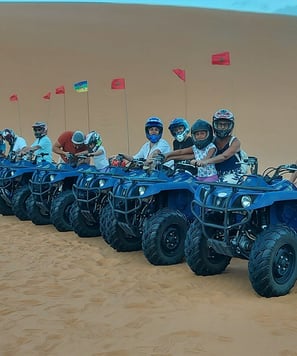

Fes to Marrakech Desert tour 2 days
Experience the best of Fes with our popular tours. From the vibrant markets of Fes to day trips to Chefchaouen, Meknes, and the desert.
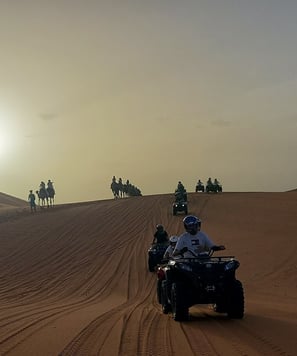

3 days desert tour from Fes to Marrakech
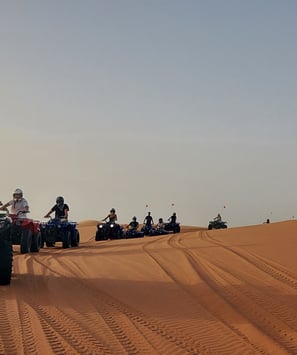

Fes to Marrakech Desert tour 4 days
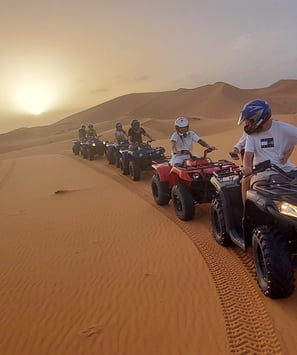

5 days desert tour from fes to marrakech
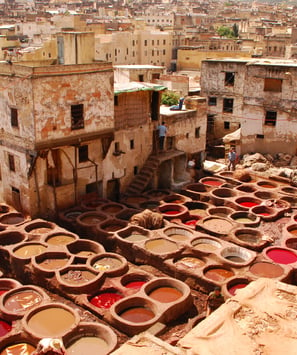

6 Days Morocco Tour From Fes
7 Days Morocco Tour From Fes
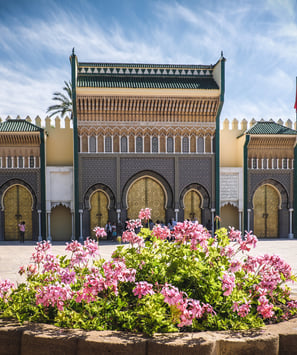

8 Days Morocco Tour From Fes
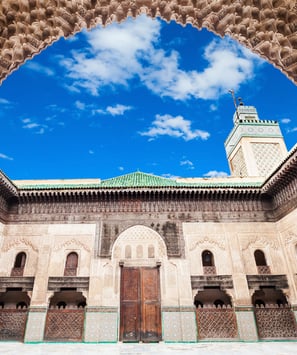

9 Days Morocco Tour From Fes
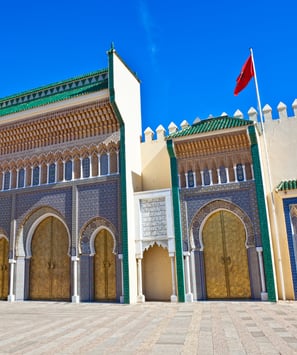

10 Days Morocco Tour From Fes
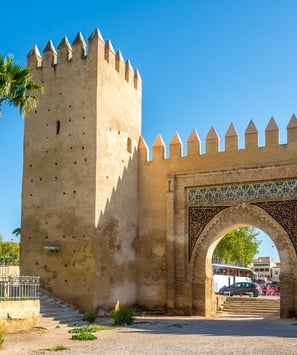

11 Days Morocco Tour From Fes
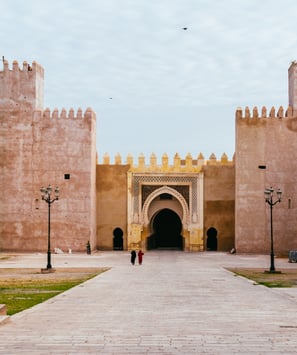

12 Days Tour From Fes
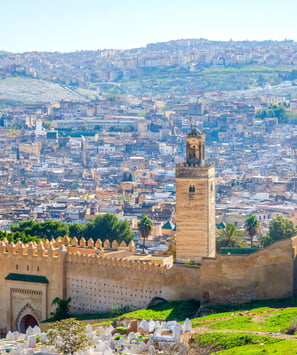

12 Days Tour From Fes
13 Days Tour From Fes to Marrakech
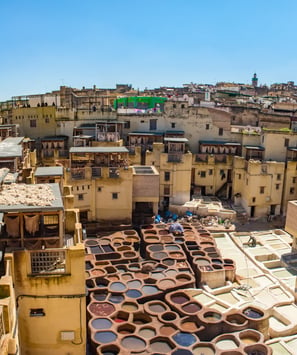

14 Days Tour From Fes to Marrakech
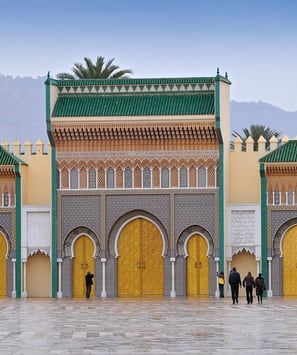

15 Days Tour From Fes to Marrakech
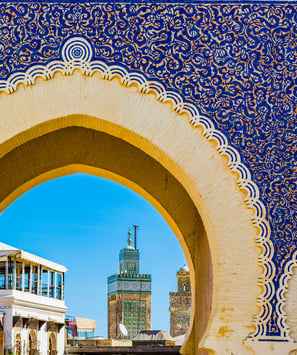

Know Before You Go:
Practical Tips for Your 12-Day Moroccan Adventure
Embarking on a 12-day journey through Morocco is an exhilarating prospect, but proper preparation can elevate your experience from memorable to truly extraordinary. Here are some insider tips to help you navigate this diverse country with ease and cultural sensitivity.
First and foremost, respect local customs and dress codes. Morocco is a predominantly Muslim country, and modest dress is appreciated, especially in more conservative areas. Women should cover their shoulders and knees, while men should avoid shorts in religious sites. Pack a light scarf – it's versatile for both sun protection and impromptu mosque visits.
Language can be a bridge or a barrier. While Arabic and Berber are official languages, French is widely spoken in urban areas. Learning a few basic phrases in Arabic or Berber can go a long way in forging connections with locals. "Shukran" (thank you) and "La shukran" (no thank you) are particularly useful.
Haggling is an integral part of Moroccan culture, especially in souks. Approach it as a friendly negotiation rather than a confrontation. Start at about half the asking price and work your way up. Remember, it's okay to walk away if you can't reach a mutually satisfactory price.
Stay hydrated, but be mindful of water sources. Stick to bottled water and avoid ice in drinks. When it comes to street food, follow the locals – busy stalls with high turnover are usually safe bets. Don't miss out on fresh orange juice, a Moroccan specialty, but ensure it's prepared hygienically.
Morocco's diverse landscape means you'll encounter various climates. Pack layers – nights in the desert and mountains can be surprisingly chilly, even when days are scorching. Comfortable, sturdy shoes are essential for navigating uneven medina streets and mountain trails alike.
Time moves at a different pace in Morocco. Embrace "Moroccan time" – things may not always run according to schedule, and that's part of the charm. Build some flexibility into your itinerary and allow time for spontaneous discoveries.
While Morocco is generally safe for travelers, exercise common-sense precautions. Be aware of your surroundings, especially in crowded areas, and keep valuables secure. Solo female travelers might experience unwanted attention; a firm "La shukran" usually suffices to deter persistent touts.
Tipping is customary in Morocco. In restaurants, 10% is standard if a service charge isn't included. For guides and drivers, 100-200 dirhams per day is appreciated. Small change is useful for tipping bathroom attendants and bag handlers.
Finally, open your heart to the renowned Moroccan hospitality. If invited for tea, accept if you can – it's a cherished tradition and a wonderful way to experience local culture firsthand. Remember, a smile and a respectful attitude will open many doors on your Moroccan adventure.
By keeping these tips in mind, you'll be well-prepared to immerse yourself fully in the magic of Morocco, navigating its complexities with confidence and cultural awareness. Your 12-day journey is set to be an unforgettable tapestry of experiences, woven with the threads of ancient traditions and warm hospitality.
What to Pack for Your Moroccan Journey
Packing for a 12-day adventure through Morocco's diverse landscapes and vibrant cities requires careful consideration. Your suitcase should be a well-curated collection of versatile items that respect local customs while keeping you comfortable in varying climates.
Start with clothing that adheres to Morocco's conservative dress code. For women, pack loose-fitting, breathable pants or long skirts, along with shirts that cover the shoulders and chest. Men should opt for lightweight trousers and collared shirts. Include at least one nicer outfit for evenings out in Marrakech or dining in upscale riads.
Layering is key to adapting to Morocco's temperature fluctuations. A light jacket or sweater is essential for cool desert nights and chilly mountain air. Don't forget a wide-brimmed hat and sunglasses to shield yourself from the intense Moroccan sun.
Footwear is crucial – pack a pair of sturdy, comfortable walking shoes for exploring medinas and archaeological sites. Sandals are great for warmer days, but ensure they're supportive enough for extended wear. If your itinerary includes a hammam visit, bring flip-flops.
A daypack is indispensable for carrying essentials during excursions. Include a reusable water bottle to stay hydrated, and a portable power bank to keep your devices charged for those Instagram-worthy moments.
For the desert portion of your journey, pack a small flashlight or headlamp for navigating camp at night. A light sleeping bag or sleep sheet can provide extra comfort in desert camps or basic accommodations.
Don't underestimate the importance of a good quality camera to capture the stunning vistas and intricate details of Moroccan architecture. If you're bringing a smartphone, consider a waterproof case for added protection against sand and unexpected splashes.
Toiletries should include high SPF sunscreen, insect repellent, and hand sanitizer. Women might want to pack a supply of feminine hygiene products, as options may be limited in rural areas. A small first-aid kit with basic medications is always a wise addition.
To respect local customs when visiting religious sites, women should pack a scarf large enough to cover their hair. This versatile item can also serve as a shoulder cover or impromptu picnic blanket.
Consider bringing some small gifts from your home country to share with hosts or new friends you meet along the way. It's a thoughtful gesture that can lead to meaningful cultural exchanges.
Lastly, leave some space in your luggage for souvenirs. Morocco's vibrant markets offer a treasure trove of unique items, from intricate carpets to aromatic spices, that you'll want to bring home.
Remember, while it's important to be prepared, try not to overpack. Many items can be purchased locally if needed, and traveling light allows for easier navigation of Morocco's bustling medinas and winding mountain roads. With these essentials in your suitcase, you'll be well-equipped to embrace every aspect of your Moroccan adventure, from the souks of Fes to the sands of the Sahara.
Cultural Etiquette and Customs
Navigating Morocco's rich cultural landscape requires a delicate balance of respect, awareness, and open-mindedness. Understanding and adhering to local customs will not only enrich your experience but also foster meaningful connections with the warm-hearted Moroccan people.
First and foremost, embrace the concept of "Moroccan time." Life moves at a different pace here, and punctuality isn't always prioritized. Adopt a flexible attitude and view delays as opportunities for unexpected discoveries rather than inconveniences.
Greetings are an essential part of Moroccan social interactions. A handshake is common, but be aware that some conservative Muslims may avoid physical contact with the opposite sex. In such cases, a smile and a hand over your heart is a respectful alternative. Learning a few Arabic greetings like "As-salaam-alaikum" (peace be upon you) will be greatly appreciated.
Dress modestly to show respect for local customs, especially when visiting religious sites or rural areas. Women should cover their shoulders and knees, while men should avoid shorts. In more conservative regions, women might consider wearing a headscarf.
When entering a Moroccan home or mosque, always remove your shoes. It's customary to bring a small gift, such as pastries or fruit, when invited to someone's home. Accept offers of mint tea – it's not just a beverage, but a symbol of hospitality and friendship.
Eating with your right hand is customary in Morocco, as the left hand is considered unclean. When sharing a communal dish, eat only from the portion directly in front of you. Declining food can be seen as impolite, so accept at least a small amount if offered.
Public displays of affection are frowned upon in Morocco. Couples should refrain from kissing or extensive touching in public spaces. However, it's common to see friends of the same gender holding hands or kissing cheeks in greeting.
Ramadan, the Islamic month of fasting, significantly impacts daily life in Morocco. If you're visiting during this time, be respectful by refraining from eating, drinking, or smoking in public during daylight hours.
Photography etiquette is crucial. Always ask permission before photographing people, especially in rural areas or markets. Some may request a small fee, while others may decline – respect their wishes either way.
When visiting mosques, be aware that many are closed to non-Muslims. Those that are open often have specific visiting hours and dress codes. Show reverence by speaking softly and avoiding disruptive behavior.
Bargaining is an integral part of Moroccan culture, especially in souks. Approach it as a friendly exchange rather than a battle. Start at about half the asking price and negotiate with a smile. Walking away if you can't agree on a price is perfectly acceptable.
Lastly, practice patience and maintain a sense of humor. Misunderstandings can happen, but approaching them with grace and a willingness to learn will often lead to memorable cultural exchanges.
By embracing these customs and approaching your interactions with respect and curiosity, you'll find Moroccans to be incredibly hospitable and eager to share their culture. Your efforts to understand and honor local traditions will undoubtedly enhance your journey, transforming it from a mere sightseeing trip into a profound cultural immersion.
Moroccan Cuisine: What to Eat and Drink
Embark on a culinary odyssey through Morocco, where every meal is a celebration of flavors, aromas, and centuries-old traditions. Moroccan cuisine, a tantalizing fusion of Berber, Arabic, Andalusian, and Mediterranean influences, offers a feast for the senses that's as diverse as the country's landscapes.
Start your gastronomic adventure with Morocco's iconic dish: tagine. Named after the cone-shaped earthenware pot it's cooked in, tagine is a slow-cooked stew that comes in countless variations. Savor the delicate balance of sweet and savory in a chicken tagine with preserved lemons and olives, or indulge in the rich flavors of a lamb tagine with prunes and almonds. Vegetarians can delight in a seven-vegetable tagine, a colorful medley of seasonal produce infused with aromatic spices.
No Moroccan meal is complete without couscous, traditionally served on Fridays but available throughout the week for tourists. This fluffy semolina pasta is typically served with tender vegetables and meat, all flavored with a fragrant broth. Don't be shy – eating couscous with your right hand is part of the authentic experience.
For a quick street food fix, try a steaming hot bowl of harira, a hearty tomato-based soup with lentils, chickpeas, and tender meat. It's especially popular during Ramadan but enjoyed year-round. Pair it with a side of chebekia, a honey-soaked sesame cookie, for a perfect blend of savory and sweet.
Seafood enthusiasts should make a beeline for the coastal towns. In Essaouira, feast on freshly grilled sardines or a hearty fish tagine. For the adventurous, try oysters from Oualidia, known for their distinctive flavor.
Meat lovers, don't miss the chance to sample mechoui, a whole lamb slow-roasted until the meat is fall-off-the-bone tender. It's often reserved for special occasions, but some restaurants in Marrakech offer it year-round.
Vegetarians need not worry – Morocco offers a bounty of plant-based delights. Zaalouk, a smoky eggplant dip, and taktouka, a zesty tomato and pepper salad, are flavorful starters. For a heartier option, try bissara, a warming fava bean soup drizzled with olive oil.
No culinary journey through Morocco is complete without indulging in its sweet treats. Sink your teeth into a sticky-sweet piece of baklava, or try chebakia, pretzel-shaped cookies deep-fried and soaked in honey. For a refreshing dessert, opt for sliced oranges sprinkled with cinnamon, a simple yet delightful end to any meal.
When it comes to beverages, mint tea reigns supreme. This sweet, fragrant concoction is more than just a drink – it's a symbol of Moroccan hospitality. Watching your host prepare and pour the tea is a ritual in itself, often accompanied by lively conversation.
For a morning pick-me-up, try nous nous, literally "half-half" in Arabic, referring to half coffee and half milk. It's Morocco's answer to a latte and a favorite among locals.
While Morocco is a predominantly Muslim country, you can find alcohol in larger cities and tourist areas. Sample local wines, particularly those from the Meknes region, known for its vineyards.
Remember to stay hydrated with bottled water and fresh orange juice, squeezed before your eyes at street stalls across the country. Just ensure the stall looks clean and has a high turnover.
As you journey through Morocco, let your taste buds guide you. Each region offers its own specialties, from Fes's famous pastilla (a sweet and savory meat pie) to Marrakech's tangia (slow-cooked lamb). Don't be afraid to try new dishes – some of your most memorable experiences might come from stepping out of your culinary comfort zone. After all, in Morocco, every meal is an adventure, every flavor a story waiting to be savored.
Shopping in Morocco: Souvenirs and Haggling
Prepare to immerse yourself in a shopping experience like no other as you navigate the vibrant souks of Morocco. These labyrinthine marketplaces are a sensory overload, where the art of commerce has been perfected over centuries. From intricate handicrafts to aromatic spices, every purchase tells a story and offers a piece of Moroccan culture to take home.
The heart of Moroccan shopping lies in its traditional crafts. Handwoven Berber carpets, each a unique masterpiece, showcase geometric patterns passed down through generations. In Fes, watch artisans hand-paint delicate ceramics, their intricate designs a testament to Moroccan artistry. For a truly special keepsake, consider a piece of leather goods from the famous tanneries – the scent alone will transport you back to Morocco long after your journey ends.
Metalwork is another Moroccan specialty. Ornate lamps cast mesmerizing patterns when lit, while intricately engraved teapots serve as both functional items and works of art. In Essaouira, seek out items crafted from thuya wood, known for its distinctive aroma and beautiful grain.
For a taste of Morocco to bring home, visit a spice shop. The pyramids of colorful spices are a photo opportunity in themselves. Consider purchasing some ras el hanout, a complex spice blend unique to each shop, or some saffron from the Taliouine region. Argan oil, whether for culinary or cosmetic use, makes for a luxurious and uniquely Moroccan gift.
Textiles are another highlight. Soft, handwoven blankets from the Atlas Mountains, vibrant silk scarves, and intricate embroideries all showcase Morocco's rich textile traditions. In Chefchaouen, look for items in the town's signature blue hue.
Now, let's discuss the art of haggling – an integral part of the Moroccan shopping experience. Approach it not as a battle, but as a dance. Start by expressing interest in an item without seeming too eager. When the seller quotes a price, offer about 40% of that amount. This might seem low, but it's a starting point for negotiation.
The key to successful haggling is to remain friendly and respectful. Smile, engage in small talk, and don't rush the process. It's perfectly acceptable to walk away if you can't agree on a price – often, this will prompt the seller to call you back with a better offer.
Remember, haggling is expected for most items, but there are exceptions. Fixed-price shops, usually in newer parts of cities, operate more like Western stores. For small purchases like bottled water or bread, haggling isn't customary.
Be aware of common tactics. A seller might claim an item is "berber antique" or made of pure silver. While there are genuine antiques and silver items available, many "antiqued" products are actually new. If authenticity is important to you, consider shopping with a reputable guide.
Don't feel pressured to buy something just because a seller has spent time with you. It's okay to browse and walk away. Conversely, if you find something you love at a fair price, don't haggle unnecessarily – supporting local artisans is part of responsible tourism.
Lastly, be mindful of luggage restrictions when shopping. Many larger items, like carpets, can be shipped home, but factor in these costs when budgeting for your purchases.
Shopping in Morocco is more than just acquiring souvenirs – it's about engaging with local culture, supporting traditional crafts, and bringing home tangible memories of your journey. Each item you purchase carries with it a story, a piece of the rich tapestry that is Morocco. So dive into the souks, engage with the sellers, and let the spirit of Moroccan commerce become part of your adventure.
Photography Tips for Capturing Morocco's Beauty
Morocco is a photographer's paradise, a land where every corner offers a potential masterpiece. From the intricate tilework of ancient mosques to the sweeping dunes of the Sahara, the country presents an endless array of visual delights. To truly capture the essence of Morocco, you'll need more than just a good eye – you'll need to understand the interplay of light, culture, and landscape that makes this country so unique.
First and foremost, embrace the golden hours. The soft, warm light of early morning and late afternoon can transform even the most ordinary scenes into magical vistas. In Chefchaouen, watch as the first rays of sun bring the blue-washed walls to life, creating a symphony of shadows and light. In the Sahara, the low sun accentuates the ripples and curves of the dunes, turning the desert into a sea of gold.
When photographing Morocco's bustling medinas, patience is key. The narrow alleys and crowded souks can be overwhelming, but take your time to find pockets of calm amidst the chaos. Look for shafts of light piercing through the covered markets, illuminating swirling dust and creating dramatic contrasts. Don't be afraid to increase your ISO in these low-light situations – a bit of grain can add to the atmospheric quality of your images.
For portraits, always ask permission before photographing people. Many Moroccans are open to being photographed, especially if you take the time to engage with them first. Learn a few phrases in Arabic or Berber to break the ice. When photographing craftsmen or vendors, consider purchasing something small as a gesture of goodwill. Remember, these interactions are about cultural exchange, not just getting the perfect shot.
Morocco's architecture offers endless compositional possibilities. In Fes and Marrakech, look for symmetry in the intricate mosaics and carved doorways. Use leading lines – like the rows of columns in the Hassan II Mosque in Casablanca – to draw the viewer's eye through the frame. Don't forget to look up – the ornate ceilings of riads and mosques often tell their own stories.
When capturing landscapes, consider using a polarizing filter to enhance the vibrant blues of the sky and reduce glare, especially in coastal areas like Essaouira. In the Atlas Mountains, a graduated neutral density filter can help balance the exposure between bright skies and shadowed valleys.
For those venturing into the Sahara, protect your gear from sand with a good quality camera bag or rain cover. The ever-changing dunes offer fantastic opportunities for minimalist compositions – experiment with long shadows and isolated subjects to convey the vastness of the desert.
Don't neglect the details that make Morocco unique. Zoom in on the hands of a henna artist at work, or capture the steam rising from a glass of mint tea. These intimate shots can be just as evocative as sweeping landscapes.
When it comes to editing, resist the temptation to oversaturate your images. Morocco's natural colors are vibrant enough – your goal should be to capture the authenticity of the scene, not create a caricature of it.
Lastly, remember that some of the best photographs come from unexpected moments. Be prepared to deviate from your itinerary if you spot an interesting scene. Sometimes, the most compelling images are found down an unassuming alleyway or in a chance encounter with a local.
Photography in Morocco is about more than just creating beautiful images – it's about telling the story of a country rich in history, culture, and natural beauty. By approaching your photography with respect, patience, and an open mind, you'll not only come away with stunning visuals but also a deeper understanding of this captivating land.
Sustainable Travel in Morocco
As you embark on your Moroccan adventure, consider the impact of your journey not just on your own life, but on the lives of those who call this enchanting country home. Sustainable travel in Morocco isn't just a trend; it's a vital approach to preserving the cultural heritage, natural beauty, and economic well-being of this diverse nation for generations to come.
Begin by choosing accommodations that prioritize sustainability. Many riads and guesthouses across Morocco are embracing eco-friendly practices, from solar water heating to organic gardens. In the Atlas Mountains, seek out community-run gîtes that directly benefit local Berber families. These lodgings not only reduce your environmental footprint but also provide an authentic cultural experience.
Water conservation is crucial in Morocco, a country facing increasing water scarcity. Be mindful of your water usage, especially in desert regions. Opt for quick showers over baths, and reuse towels when possible. Consider carrying a reusable water bottle and refilling it with filtered water instead of constantly buying plastic bottles.
When exploring Morocco's natural wonders, adhere to the principle of "leave no trace." This is particularly important in fragile desert ecosystems. Stick to designated trails in national parks, and resist the urge to collect plants or disturb wildlife. In the Sahara, choose camel treks or walking tours over motorized dune bashing, which can damage the delicate desert environment.
Support local economies by purchasing handicrafts directly from artisans. In Fes, visit cooperative workshops where traditional crafts like ceramics and metalwork are keeping ancient skills alive. In rural areas, look for women's cooperatives selling argan oil or woven textiles. These purchases not only provide you with authentic souvenirs but also help preserve Morocco's rich artisanal heritage.
Be mindful of your energy consumption. Many areas of Morocco experience regular power shortages, so turn off lights and air conditioning when leaving your room. In remote areas, consider bringing a solar charger for your devices to reduce reliance on local electricity.
Choose local guides and tour operators who prioritize sustainable practices. Look for companies that employ local staff, support community projects, and demonstrate a commitment to environmental conservation. These operators often provide more insightful, authentic experiences while ensuring your tourism dollars benefit local communities.
Respect cultural norms and dress codes, particularly in more conservative areas. This not only shows respect for local traditions but also helps prevent the erosion of cultural identity that can occur with mass tourism.
When it comes to cuisine, opt for locally-sourced, seasonal ingredients. Many riads and restaurants now offer farm-to-table experiences that showcase the best of Moroccan produce while supporting local farmers. Be adventurous in trying traditional dishes – it's a delicious way to support local food systems.
Consider giving back to the communities you visit. Many reputable organizations in Morocco welcome volunteers for short-term projects, from teaching English to participating in conservation efforts. Even if you can't volunteer, consider donating to local charities that support education, healthcare, or environmental protection.
Lastly, be an ambassador for sustainable travel. Share your experiences and the importance of responsible tourism with fellow travelers. Your stories and photos can inspire others to approach their Moroccan adventure with the same mindfulness and respect.
By embracing sustainable travel practices, you're not just minimizing your environmental impact – you're actively contributing to the preservation of Morocco's unique culture and landscapes. Your conscientious choices ensure that the magic of Morocco will continue to captivate and inspire travelers for years to come, while supporting the communities that make this country so special.
Health and Safety on Your Moroccan Tour
Embarking on a 12-day adventure through Morocco promises excitement and discovery, but it's crucial to prioritize your well-being throughout the journey. With a few precautions and some common sense, you can ensure your Moroccan odyssey is memorable for all the right reasons.
First and foremost, stay hydrated. Morocco's climate can be unforgiving, especially in the summer months or desert regions. Carry a reusable water bottle and refill it regularly with bottled or filtered water. Avoid tap water, including ice cubes in drinks, to prevent stomach upsets. When the midday sun is at its fiercest, seek shade and consider adopting the local custom of a siesta.
Food safety is paramount. While Moroccan cuisine is a delight for the senses, be discerning about where you eat. Opt for busy restaurants with high turnover, ensuring food is fresh and properly cooked. Street food can be tempting, but choose stalls where you can see the food being prepared. Fruits and vegetables should be peeled or thoroughly washed with purified water.
Pack a basic first-aid kit including over-the-counter pain relievers, anti-diarrheal medication, and any prescription drugs you regularly take. Consider bringing oral rehydration salts, especially if you're prone to dehydration. While pharmacies are readily available in cities, they might be scarce in rural areas.
Protect yourself from the sun's intense rays. A wide-brimmed hat, high-SPF sunscreen, and sunglasses are essential, even in winter. The sun's reflection off desert sand can be particularly harsh, so be extra vigilant during Sahara excursions.
When exploring Morocco's vibrant medinas, stay alert to your surroundings. Pickpocketing can occur in crowded areas, so keep valuables secure and be wary of overly friendly strangers offering unsolicited help. That said, don't let caution override your ability to engage with the warm Moroccan hospitality – most locals are genuinely helpful and welcoming.
If you're a female traveler, you might experience unwanted attention, particularly in busy urban areas. Dressing modestly and confidently ignoring catcalls usually suffices. Consider joining a reputable tour group or hiring a guide for added security and cultural insight.
When traversing Morocco's diverse landscapes, from mountain passes to desert dunes, listen to your body. Altitude sickness can occur in the High Atlas Mountains, so acclimatize slowly and stay hydrated. In the desert, respect the power of the sun and always follow your guide's advice.
Be cautious with animals. While a camel trek is a must-do experience, remember these are working animals, not pets. Follow your guide's instructions carefully. In cities, avoid stray dogs and cats, no matter how cute they might appear.
Respect local customs to avoid unintentional offense. During Ramadan, refrain from eating, drinking, or smoking in public during daylight hours. When visiting religious sites, dress conservatively and follow any specific rules, such as removing shoes.
While Morocco is generally a safe country for tourists, it's wise to stay informed about current events and any travel advisories. Register with your country's embassy or consulate for updates and emergency assistance if needed.
Travel insurance is non-negotiable. Ensure your policy covers adventure activities if your itinerary includes things like camel trekking or mountain hiking. Keep emergency numbers handy, including local police, your embassy, and your insurance provider.
Lastly, trust your instincts. If a situation feels unsafe, remove yourself from it. Don't be afraid to ask for help – Moroccans are known for their hospitality and are often more than willing to assist a traveler in need.
By taking these precautions, you're free to immerse yourself fully in the magic of Morocco. From the bustling souks to the serene Sahara, you'll be well-prepared to embrace every moment of your adventure, creating memories that will last a lifetime while staying safe and healthy throughout your journey.
Best Time to Visit Morocco
Morocco, with its diverse landscapes and vibrant culture, offers a year-round allure, but timing your visit can significantly enhance your experience. The best time to embark on your 12-day adventure depends on your preferences, tolerance for heat, and the specific regions you plan to explore.
Spring, from March to May, is widely considered the prime season for visiting Morocco. The weather is pleasantly warm across the country, with temperatures ranging from 18°C to 28°C (64°F to 82°F). Wildflowers carpet the countryside, transforming the landscape into a colorful tapestry. This season is ideal for hiking in the Atlas Mountains, where snow has melted from all but the highest peaks, revealing lush valleys and Berber villages emerging from winter's grip. Coastal cities like Essaouira enjoy mild temperatures and less wind, perfect for beachside relaxation.
Autumn, from September to November, mirrors spring's agreeable climate. The scorching summer heat retreats, leaving comfortable temperatures for exploration. This season brings the harvest of dates in the oases and grapes in the Middle Atlas, adding a gastronomic dimension to your journey. The Sahara becomes more accessible as the extreme heat subsides, making camel treks and desert camping more enjoyable.
Summer, from June to August, sees tourism peak despite the intense heat. Coastal areas offer respite with cooling Atlantic breezes, making cities like Rabat and Essaouira popular escapes. If you can tolerate high temperatures, summer can be an excellent time to visit the imperial cities, as many locals leave for cooler spots, resulting in less crowded medinas. However, the Sahara can be unbearably hot, with temperatures soaring above 40°C (104°F), making desert excursions challenging.
Winter, from December to February, brings cooler temperatures and the possibility of rain, particularly in the north. Coastal areas remain mild, but inland cities like Fes and Marrakech can be chilly, especially at night. The Atlas Mountains see snowfall, transforming places like Ifrane into winter wonderlands. This season offers a unique perspective on Morocco, with fewer tourists and the chance to experience local winter traditions. It's an excellent time for cultural exploration in the cities and for finding bargains in the souks.
Ramadan, the Islamic month of fasting, is a significant consideration. Its dates vary each year, moving earlier by about 11 days annually. While traveling during Ramadan offers insight into Moroccan religious life, be aware that some restaurants and shops may have limited daytime hours, and the overall pace of life slows down.
For photography enthusiasts, the shoulder seasons of spring and autumn offer the best light, with clear skies and dramatic sunsets. The soft, golden light during these months beautifully illuminates the country's diverse landscapes and architectural wonders.
Festival-goers might plan their visit around events like the Fes Festival of World Sacred Music in June, or the Tafraoute Almond Blossom Festival in February, adding cultural richness to their Moroccan experience.
Ultimately, the best time to visit Morocco depends on your personal preferences and travel style. Whether you're seeking sun-soaked beach days, cool mountain treks, or immersive cultural experiences, Morocco's diverse climate ensures that there's an ideal time for every type of adventure. By aligning your visit with the season that best suits your interests, you'll ensure that your 12-day journey through this captivating country is nothing short of magical.
Accommodation Options Throughout Your Journey
Your 12-day Moroccan adventure offers a tapestry of lodging experiences as diverse as the country itself. From opulent riads in ancient medinas to Berber tents under starlit Saharan skies, each night's stay is an integral part of your journey, immersing you deeper into Morocco's rich culture and stunning landscapes.
In imperial cities like Fes and Marrakech, traditional riads reign supreme. These centuries-old merchant houses, converted into intimate guesthouses, offer a glimpse into Morocco's architectural splendor. Centered around a courtyard often adorned with intricate tilework and bubbling fountains, riads provide an oasis of tranquility amidst the bustling medinas. Expect individually decorated rooms, rooftop terraces with panoramic views, and personalized service that makes you feel less like a guest and more like a welcomed friend.
For a taste of luxury, Morocco's high-end hotels and resorts, particularly in Marrakech, blend modern amenities with Moorish aesthetics. Think sprawling pools fringed by palm trees, spa facilities offering traditional hammam treatments, and rooms that seamlessly fuse contemporary comfort with local artisanal touches.
Venturing into the Atlas Mountains, you'll encounter rustic gîtes and mountain lodges. These family-run establishments, often in remote Berber villages, provide a window into rural Moroccan life. While amenities might be basic, the warmth of your hosts and the breathtaking mountain vistas more than compensate. Some eco-lodges in this region offer a perfect blend of sustainability and comfort, allowing you to minimize your environmental impact without sacrificing modern conveniences.
Your Sahara experience culminates in a night at a desert camp, an unforgettable highlight of your journey. Options range from simple Berber tents to luxurious glamping setups complete with en-suite bathrooms and gourmet dining. Regardless of the comfort level, nothing compares to the magic of falling asleep under a canopy of stars, surrounded by endless dunes.
In coastal towns like Essaouira, restored colonial-era buildings now house charming boutique hotels. Many offer sea views and easy access to the beach, perfect for those seeking a maritime touch to their Moroccan sojourn. Some even provide kitesurfing and windsurfing facilities, catering to adventure enthusiasts.
For an immersive cultural experience, consider a homestay, particularly in smaller towns or rural areas. Living with a local family offers unparalleled insights into everyday Moroccan life, from traditional cooking methods to social customs. While accommodations are often simple, the cultural exchange is invaluable.
In larger cities, international hotel chains provide familiar comforts for those who prefer standardized amenities. These can be particularly appealing in transit cities like Casablanca, where proximity to the airport might be a priority.
For budget-conscious travelers, hostels and budget hotels are readily available, especially in tourist hubs. Many offer private rooms alongside dormitories, catering to various preferences and budgets.
When booking accommodations, consider the location carefully. In medinas, hotels deep within the labyrinthine streets offer an authentic experience but can be challenging to access with luggage. Properties just outside the old city walls often provide easier access while still being within walking distance of major attractions.
Remember that Morocco's popular destinations can get fully booked during peak seasons. Securing your accommodations well in advance, especially for highly-rated riads and desert camps, ensures you don't miss out on the most enchanting stays.
Ultimately, Morocco's diverse accommodation options are more than just places to rest your head. They're gateways to the country's hospitality, architecture, and way of life. By choosing varied lodgings throughout your journey, from bustling medinas to serene mountains and windswept coasts, you'll weave a rich tapestry of experiences that enhance every aspect of your Moroccan adventure.
Transportation Between Cities
Navigating Morocco's diverse landscape is an adventure in itself, with options ranging from modern high-speed trains to traditional camel caravans. Your choice of transportation not only determines how quickly you'll reach your destination but also shapes your experience of the country's stunning vistas and vibrant culture.
For journeys between major cities like Casablanca, Rabat, Fes, and Marrakech, Morocco's efficient train network is often the most comfortable and time-effective option. The country's pride, the Al Boraq high-speed train, connects Tangier to Casablanca in just over two hours, offering a glimpse of Morocco's rapid modernization. First-class compartments provide air-conditioning and more spacious seating, while second-class offers a chance to mingle with locals. Booking in advance is recommended, especially during peak tourist seasons and holidays.
Bus travel is an economical alternative, covering routes that trains don't reach. Companies like CTM and Supratours offer reliable services with air-conditioned coaches. While slower than trains, buses allow you to witness Morocco's changing landscapes up close, from fertile plains to rugged mountain passes. For budget-conscious travelers, local buses provide an even more immersive – albeit less comfortable – experience.
For flexibility and access to off-the-beaten-path destinations, consider hiring a car. Morocco's road network is generally good, with well-maintained highways connecting major cities. However, be prepared for more challenging conditions in rural areas and mountain regions. Driving allows you to stop at will, exploring hidden villages or scenic viewpoints that organized tours might bypass. Remember, a 4x4 vehicle is essential if your itinerary includes desert excursions or remote mountain areas.
If you prefer to leave the driving to others, shared grand taxis are a uniquely Moroccan experience. These Mercedes sedans typically carry six passengers and depart when full, offering a cost-effective way to travel between nearby cities or to locations not serviced by buses. It's a chance to practice your bartering skills when negotiating fares and an opportunity for cultural exchange with fellow passengers.
For shorter distances or within cities, petit taxis are convenient. These small cars are metered in most cities, but it's wise to agree on a fare before starting your journey in smaller towns. In medinas and old city centers where vehicles can't enter, walking is often the best way to soak in the atmosphere and discover hidden gems.
When venturing into the Sahara, dromedary camels become your transport of choice. While primarily used for the iconic sunset trek into desert camps, longer camel excursions can be arranged for those seeking a truly authentic desert experience. It's a slow but unforgettable way to travel, allowing you to connect with the rhythms of desert life.
For those short on time or looking to cover vast distances quickly, domestic flights operated by Royal Air Maroc connect major cities and tourist destinations. This can be particularly useful for reaching southern cities like Ouarzazate or Dakhla without long overland journeys.
When planning your transportation between cities, consider not just the destination but the journey itself. A scenic train ride through the Middle Atlas, a winding bus journey over Tizi n'Tichka pass, or a camel trek across rippling sand dunes – each mode of transport offers a unique perspective on Morocco's diverse beauty.
Remember that travel times can be unpredictable due to road conditions, weather, or impromptu stops. Embrace this as part of the adventure, allowing flexibility in your schedule for unexpected discoveries along the way. Whether you're watching the landscape unfold from a train window, sharing stories with locals in a grand taxi, or swaying atop a camel, your journeys between Moroccan cities are sure to be as memorable as the destinations themselves.
Budget Considerations for Your 12-Day Tour
Embarking on a 12-day Moroccan odyssey requires thoughtful financial planning to ensure you can fully immerse yourself in the country's rich tapestry of experiences without constant worry about your wallet. Morocco offers a spectrum of options for every budget, from luxury riads to humble homestays, gourmet restaurants to street food delights.
Accommodation will likely be your largest expense. In major cities like Marrakech and Fes, mid-range riads typically cost between 600-1000 MAD ($60-100 USD) per night, while luxury options can easily exceed 2000 MAD ($200 USD). Budget travelers can find hostels or simple guesthouses for around 150-300 MAD ($15-30 USD) per night. Desert camps vary widely, from basic tents at 300 MAD ($30 USD) to luxurious glamping experiences at 2500 MAD ($250 USD) or more.
Transportation costs depend on your chosen mode. Train travel is reasonably priced, with a first-class ticket from Casablanca to Marrakech costing around 300 MAD ($30 USD). Buses are cheaper, with long-distance routes typically under 200 MAD ($20 USD). If hiring a car, budget at least 350 MAD ($35 USD) per day, plus fuel. For a more hassle-free experience, a private driver for the entire 12-day tour might cost 8000-12000 MAD ($800-1200 USD), but this can be economical if traveling in a small group.
Food can be surprisingly affordable if you embrace local cuisine. A hearty tajine at a modest restaurant might cost 50-80 MAD ($5-8 USD), while street food like sandwiches or falafel can be as little as 20 MAD ($2 USD). High-end restaurants in tourist areas can charge 200-400 MAD ($20-40 USD) or more for a meal. Budget around 150-300 MAD ($15-30 USD) per day for food, depending on your dining preferences.
Activities and entrance fees vary. Expect to pay around 70 MAD ($7 USD) for most museums and historical sites. Guided tours of medinas or day trips to nearby attractions can range from 200-600 MAD ($20-60 USD) per person. A camel trek with overnight desert camping typically costs 500-1000 MAD ($50-100 USD), depending on the luxury level.
Shopping in Morocco's vibrant souks can be a budget wildcard. Handcrafted items like carpets, ceramics, or leather goods can range from budget-friendly to extravagant. Set aside a shopping budget based on your interests, perhaps 1000-3000 MAD ($100-300 USD) for souvenirs and smaller purchases.
Don't forget to budget for tips. While not obligatory, tipping is appreciated in Morocco. Budget about 10% for restaurant services, 20-50 MAD ($2-5 USD) for hotel staff, and 100-200 MAD ($10-20 USD) per day for guides or drivers.
Unexpected expenses always arise, so include a contingency fund of about 10% of your total budget for emergencies or spontaneous experiences.
For a comfortable, mid-range 12-day tour, budget around 15000-25000 MAD ($1500-2500 USD) per person, excluding international flights. Budget travelers could manage with 8000-12000 MAD ($800-1200 USD), while luxury seekers might spend 40000 MAD ($4000 USD) or more.
Remember, Morocco rewards those who venture beyond tourist traps. Often, the most memorable experiences – a sunset over the Sahara, a conversation with a local artisan, or a cup of mint tea shared with new friends – cost little or nothing at all.
Lastly, consider the timing of your visit. Prices can spike during peak seasons (spring and fall) and around major holidays. Traveling during the shoulder season can offer significant savings without compromising too much on weather or experiences.
By planning your budget carefully and allowing for both structure and spontaneity, you'll ensure that your 12-day Moroccan adventure is rich in experiences, regardless of your spending capacity. After all, the true wealth of Morocco lies in its culture, landscapes, and people – treasures available to all who journey there with an open heart and mind.
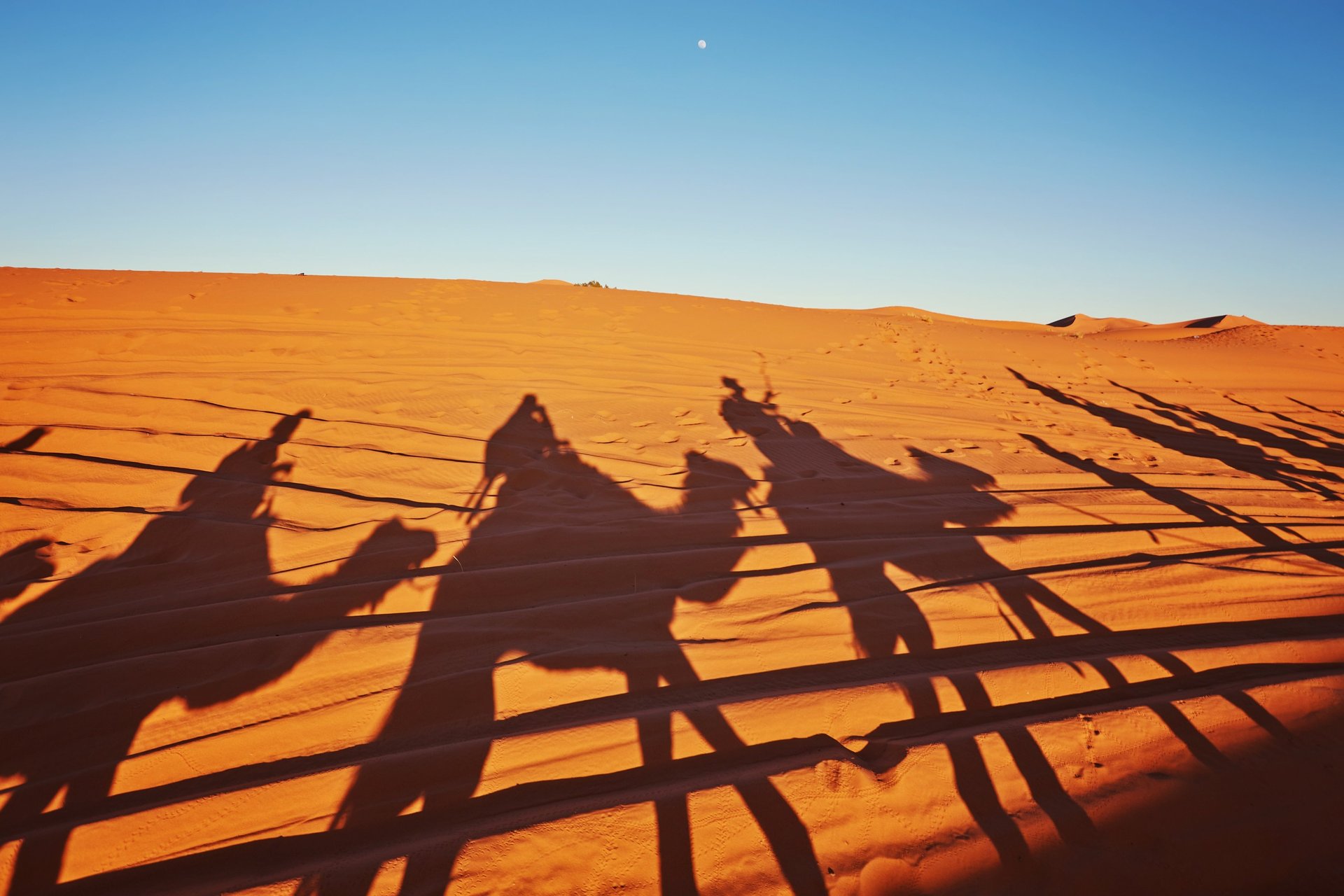
Get in touch
Please use the form below to email us, and we’ll respond as quickly as possible. If you don’t hear from us within 24 hours, feel free to send a WhatsApp message or call us at +212625473756. We look forward to connecting with you!
Address
N 45, Hay El Qods Rue 06, Rissani 52450. Morocco
Contact Us
Our Services
Tangier Tours
Agadir Tours
Hot Air Balloon
Sandboarding
Camel Trekking
Merzouga Horse Riding
Quad Biking
4x4 Desert Safaris
Photography Tours
Desert Camping


